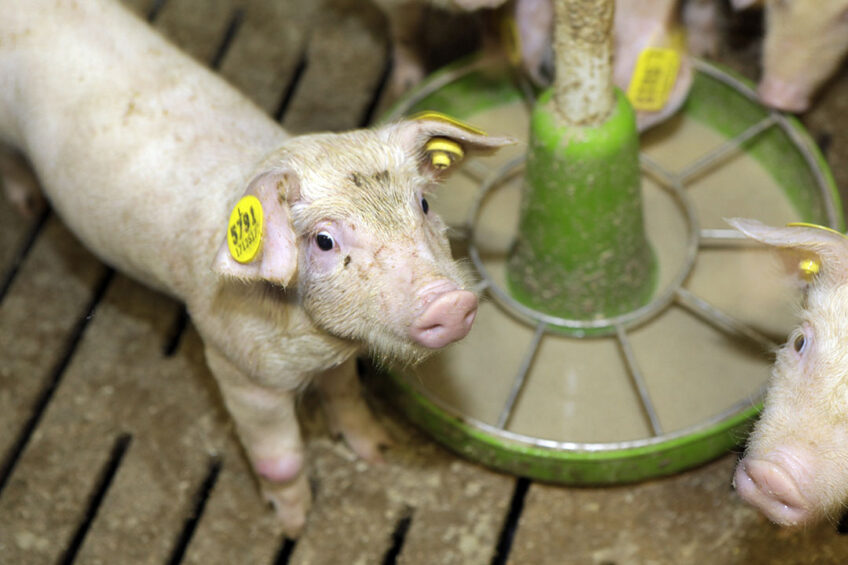Supplementary feeding: Enhancing piglet gut health

Finding the right composition for piglet feed is not always an easy job. In light of tightening legislation, it is sometimes hard to make the right choice, as the range of additives and ingredients appears endless. This comprehensive overview could be a start.
The pig gut is home to a dynamic microbial population creating a complex ecosystem that has a symbiotic relationship with the host. This microbial population, also known as gut microbiota, has a profound impact on the host’s health and is referred to as a forgotten organ. Gut microbiota are essential to maintaining nutritional, physiological and immunological functions of the pig. Disturbances in the gut microbial ecosystem during pig rearing can dramatically increase risk of disease.
To meet production goals in today’s intensive swine farming, piglets are weaned before a stable gut microbial population is established. Furthermore, low feed intake and stressors and challenges associated with weaning affect gut structure and function, disrupt the gut microbial ecosystem, compromise gut health and enhance piglet susceptibility to bacterial post-weaning diarrhoea.
Providing supplemental feed pre- and post-weaning:
- increases dry matter intake
- enhances weaning weight, reduces the severity of the growth check post-weaning
- improves post-weaning performance through the stimulation of digestive enzymes associated with carbohydrate and protein digestion, and through tolerance to antigens present in the diets fed after weaning
What are gut microbiota?
Gut microbiota are micro-organisms, including bacteria and other single-celled organisms, that live in the digestive tracts of animals.
The gut microbiota has numerous roles benefiting the host, such as:
- digestion and fermentation of carbohydrates
- production of vitamins
- maintenance of normal functions of the intestinal villi
- regulation of immune responses
- protection from pathogenic bacteria
Density and diversity of gut microbiota is distinct in different intestinal tract regions such as the jejunum, ileum and caecum and in various growing periods from early life to adult. Levels and sources of proteins or fibres shape the diversity and composition of the gut microbiota in weaning piglets.
Factors affecting gut microbiota
Several factors affect the diversity and activity of the gut microbiota, including:
- colonisation and associated succession of microbial populations
- the age of the pig and the environment it inhabits
- antimicrobial agents
- dietary composition
- supplemental feed
- feed processing
- feeding methods
- disease load
- weaning
- season
- environment
- stress and genetics
Weaning as a critical part of pig life
In the modern swine industry, weaning occurs at around 3 to 4 weeks of age. It is a stressful and complex event characterised by changes in diet and social and environmental life conditions. Weaning profoundly impacts piglet health and may lead to decreased performance and sometimes mortality.
Social and environmental stresses due to weaning are generated by:
- separation from the mother
- handling
- transport
- different physical environments and mixing litters
Which in turn contribute to local inflammation in the piglet’s gut.
Restoring gut microbial balance
The nutritional components of pig diets can be adjusted using various feed additives to restore gut microbial balance associated with weaning transition in piglets. Some feed additives to restore gut microbial balance are discussed in the next section.
Zinc oxide
Zinc oxide is one of the most effective feed additives with antimicrobial properties that is used to fight against post-weaning infections. However, high levels of zinc oxide can negatively impact pig health due to the accumulation of zinc in the liver, pancreas and kidney. Furthermore, from July 2022, European Union legislation limits the use of zinc oxide in animal production to a maximum of 150 mg/kg because of suspected environmental pollution.
Essential oils
Essential oils are complex mixtures of volatile organic compounds obtained from many diverse plants with antimicrobial, antioxidant or antiviral properties. The supplementation of piglet diets with essential oils has been associated with an increase in the Lactobacillus bacteria group and a decrease in Escherichia coli or total coliforms.
Organic acids
Short- and medium-chain organic acids, such as citric, propionic, lactic or fumaric acids, have bacteriostatic and bactericidal effects; therefore, they are used in high doses in piglet diets for feed preservation. Using organic acids in newly weaned piglets is related to a decrease in coliforms and an increase in Lactobacillus, and they impact the microbiota composition from the stomach to the colon in a broader manner.
Prebiotics
Prebiotics are fibres defined as selectively fermented dietary ingredients that allow specific changes both in the composition and/or activity of the gut microbiota with a beneficial physiological effect on the host. Prebiotic inclusion in pig diets stimulates the proliferation and metabolic activity of beneficial microbes and contributes to a stable microbial ecosystem. It is reported that prebiotics increase the proportion of Lactobacillus and decrease the amount of potentially harmful groups such as Clostridium and Enterobacteriaceae on the intestinal microbiota of weaning piglets.
Probiotics
Probiotics are live micro-organisms that can be used to prevent and treat microbial imbalance by altering gut microbiota populations. Lactic acid bacteria, such as Lactobacillus, Bifidobacterium, Enterococcus and Streptococcus, and yeasts from the genus Saccharomyces are the most frequently used micro-organisms. Feeding Lactobacillus derived from the pig intestine as probiotics reduces the abundance of Enterobacteriaceae, including pathogenic E. coli, minimises incidence of diarrhoea, enhances immune response during infection and increases weight gain. Piglets suckling from probiotic-fed sows may be a promising development in probiotic application.
Fermentable carbohydrates
Dietary carbohydrates, wheat starch and beet pulp can stimulate microbial fermentation, increase beneficial Lactobacillus species in gut microbiota and promote a stable and healthy gut microbial ecosystem. Conventional pig diets are based on cereal grains that naturally contain fermentable carbohydrates, including resistant starch, β-glucans and hemicellulose. Complex diets that replace wheat with barley increase mucosal microbiota uniformity and piglet growth after weaning.
Concluding remarks
The gut microbial ecosystem is essential for normal nutritional, physiological and immunological functions of the pig. Disturbance in the microbial ecosystem creates an opportunity for pathogenic organisms to colonise and cause disease. Management practices in intensive swine production such as early weaning and diet formulation unintentionally disturb the gut microbial ecosystem, predisposing piglets to disease. Weaning is a critical event in the intensive swine industry which leads to gut disorders, raising economic and public health concerns. Therefore, for better management of weaning transition, it is critical to apply some feed additives as a strategy to restore gut microbial balance. However, further research should be undertaken to better understand the succession of events leading to gut microbial imbalance, as well as the relative involvement of influencing factors.











